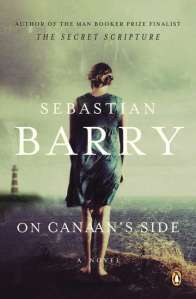Published in 1993, A Place Where the Sea Remembers was the first novel of Sandra Benitez. It won the Minnesota Book Award in 1994, and the book focuses on the residents of a peasant neighborhood in Santiago in the 1980s.
The novel reads like linked short stories for most of the book, but ties together as a complete arc. Each chapter focuses on a different character and dips into the lives of the others, which is how the story moves forward chronologically.
Set in the 1980s, the setting of Santiago is never explicitly named as Santiago, Chile, and the book in no way explores the political backdrop of Chile in the ‘80s. I wondered at the complete absence of the effects of military coups, uprisings, and violence on the characters, and when I finished the book and read the blurb on the back cover, I discovered this Santiago was supposed to be in Mexico. Ah ha.
Benitez displays some lovely writing: “Rhythmically the waves reached her, wetting first her toes, and then her ankles and finally her calves. She looked out to sea and tossed a sapphire-tinted flower onto each new cresting wave.” However, the descriptions are on the thin side and so are the characterizations. At a spare 163 pages, with more than half a dozen characters, in a first novel this is likely a result of the writer’s still-developing skill. It is tricky, however, to create fully rendered characters from another culture, particularly one with a colonial context and a third-world economy. The result can be caricatures, racist depictions, or stock descriptions of things like peasant superstition—and, in fact, the novel hinges on spells and superstition. That said, I love books that delve into the mystical and magic, such as some of the work of Alice Hoffman or the profound work of Angela Carter’s adult feminist fairy tales.
Christina Garcia provides the cover blurb from The Washington Post Book World, “Profound in its simplicity and rhythm…a quietly stunning work that leaves soft tracks in the heart.” And Garcia is right. It is simple, and the rhythms are lovely. However, I wonder about how the publishing landscape has changed in the twenty years since this first novel was published relative to how high the bar is for first-time novelists now. That said, I enjoyed the book. The characters and setting were emotionally compelling, the structure was smart, and I appreciate first hand how difficult a first novel is to write. Benitez has since published three other novels and a memoir, and it will be both interesting and enjoyable to see how her work has developed in time.



